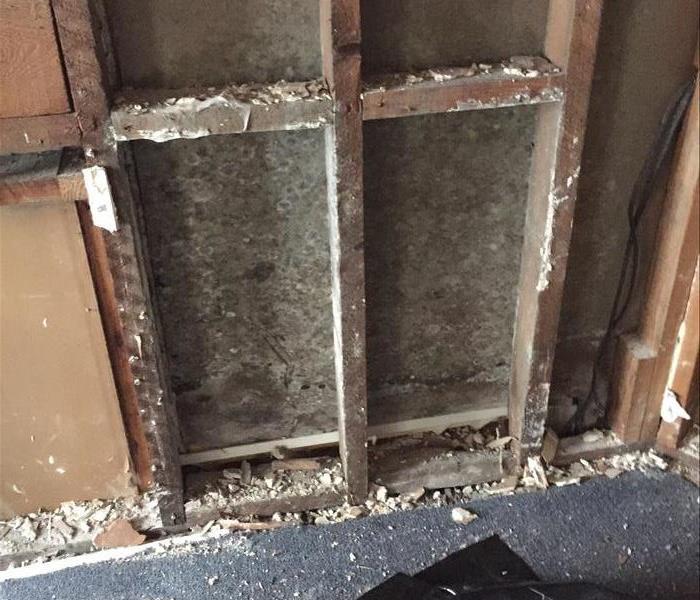With all these heavy rains, mold
2/16/2018 (Permalink)
Where to Test for Black Mold in Your Home
Black mold is one of the worst fears you might have as a homeowner. Toxic black mold (Stachybotrys chartarum) grows in common household features such as carpet, drywall, insulation, and sub-flooring. It grows when these household materials have been in contact with moisture. As it grows, it releases spores into the air. These spores can be harmful or even fatal to humans. At low levels of exposure, spores can cause respiratory problems and irritation; at severe levels of exposure, it can cause bleeding in the lungs and severe nausea and vomiting.
Where to Test for Black Mold
Testing for mold is essential, and you should have a dwelling inspected for black mold before you buy it or sign a lease. If you suspect there may be black mold in your home, or you have never had your home tested, contact SERVPRO of Howell/Wall for professional mold remediation services in the Howell and Wall area. While many aspects of home-ownership can be handled in a D.I.Y. fashion, black mold is not something to be messed around with.
Carpet
Black mold loves to live on the carpet. Dust collects in carpet fibers and those same fibers trap the humidity and dampness that enables mold to grow. Carpets in below-ground levels are especially susceptible to mold as there is more humidity there.
Carpet mold is often not visible from the surface, except in severe cases, which makes testing for it necessary even if you don't see any evidence.
Air Conditioning and Heating Vents
Air conditioning and heating vents actually create ideal conditions for black mold to grow. Dual-purpose vents that both heat and cool your house raise that risk as they are in constant use.
When you have mold in your air vents, those spores are being circulated throughout your home. The sooner you can perform mold remediation procedures, the better. SERVPRO of Howell/Wall has a 24-hour mold emergency service hotline to quickly begin the process of cleaning your air vents.
Drywall
Mold is unfortunately common in drywall, as it traps humidity. This is especially common as the seasons change from winter into spring. Because of the nature of it, mold in drywall is rarely visible except in severe cases. For this reason, it's imperative to have a potential home be tested for mold in the walls before you sign a lease or put down a deposit.





 24/7 Emergency Service
24/7 Emergency Service
